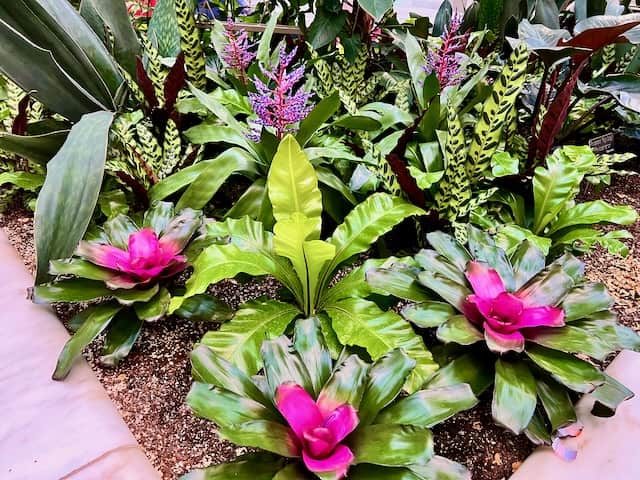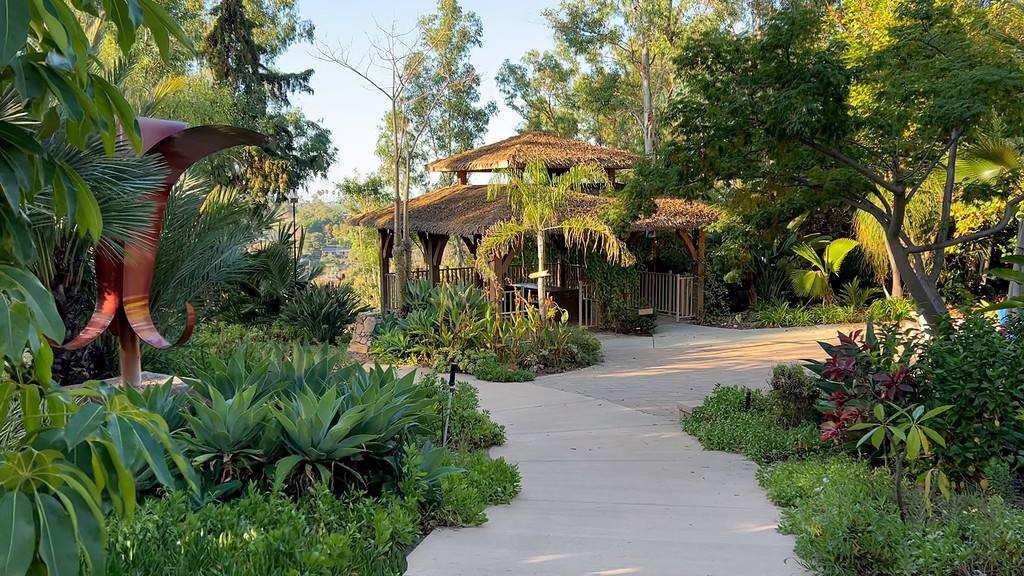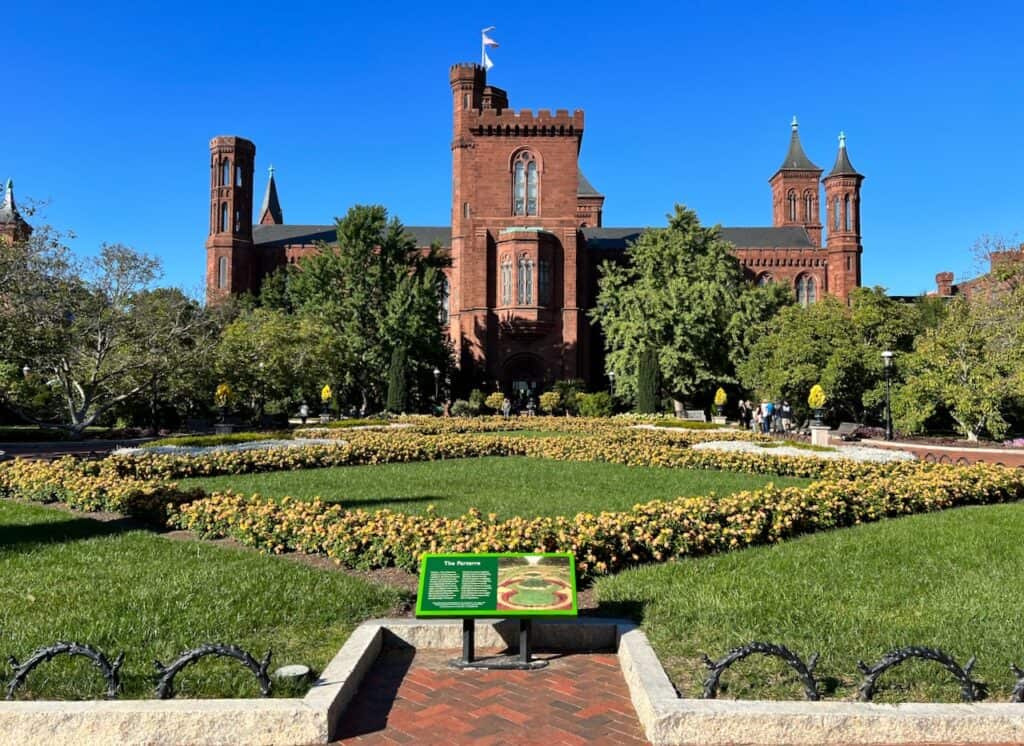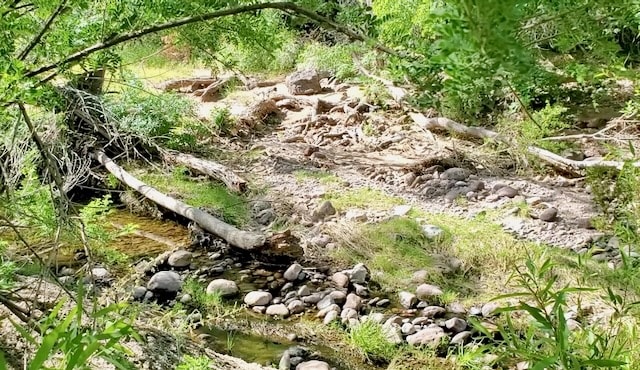
Botanical garden terms are added as they come up in the articles about the gardens. I promise to keep it simple, with a quick explanation of the word and a pronunciation link.
Allee
A walkway lined with trees or tall shrubs. Pronounced al·lée ä-ˈlā
Agave
Plants having spiny-margined leaves and flowers in tall spreading panicles, including some cultivated for their fiber or sap or ornament. Pronounced ə-ˈgä-vē .
Apiary
A place where bees are kept, a collection of hives or colonies of bees kept for their honey. Pronounced api·ary ˈā-pē-ˌer-ē
Arboretum
An arboretum is where trees and other woody plants are cultivated for scientific, educational, and recreational purposes, usually found in public gardens, research institutions, and universities. Pronounced ar·bo·re·tum ˌär-bə-ˈrē-təm
They often serve as living museums and may include many tree species, including native and exotic plants. Arboreta can also be used for research on tree growth, disease, and other aspects of plant biology.
Auricula Theatre
19th-century British gardeners’ cases were built to display delicate auricula Primroses. The cases protected the flowers from wind and rain. Photo of an Auricula Theatre at the New York Botanical Garden.

Aroids
The Araceae are monocotyledonous flowering plants in which flowers are borne on an inflorescence called a spadix. The spadix is usually accompanied by, and sometimes partially enclosed in, a spathe. Also known as the arum family, members are often colloquially known as aroids. Pronounced er-ˌȯid, ˈa-ˌrȯid .
Auricula Theatre
19th Century British Gardeners built cases to display delicate primroses and protect them from wind and rain. These “theaters” evolved into intricate sets, sometimes with painted curtains. Pronounced au·ric·u·la ȯ-ˈri-kyə-lə . Photo: New York Botanical Garden.

Bromeliad

Bromeliads are a family of monocot flowering plants native mainly to the tropical Americas. Most bromeliads have attractive forms and leaf colors, and many with flowers that can last for months. Pronounced bro·me·li·ad, brō-ˈmē-lē-ˌad . Photo: Smithsonian Kogod Courtyard Garden Washington D.C.
Carnivorous plants
Plants that get nutrients obtained from the breakdown of insects. Pronounced car·niv·o·rous, kär-ˈni-v(ə-)rəs .
Chadar
A Chadar is a textured water chute. A visually interesting cascade style, a chadar has an angled face of approximately 25-60 degrees that uses textured masonry to create a series of small, turbulent cascades as the water passes down the chute—pronounced shuh·daar.
The descending water catches the light. Common patterns include chevrons, half-moons, shells, leaves, diamonds, and stars.
Conifers
Coniters (cone-bearing plants) are hardy trees and shrubs adapted to thrive in cold or dry climates. Slender, needle-like leaves in many species or tiny, layered scales in others retain more moisture than broad, flat leaves. They quickly shed snow and rain and offer little wind resistance, reducing the risk of branches bending and breaking in storms. Most conifers are evergreen and retain their leaves in winter, saving energy spent replacing leaves each spring. A few deciduous conifers, including larch and bald cypress, lose leaves in winter. Source: New York Botanical Garden. Pronounced co·ni·fer ˈkä-nə-fər .
Conservatory
A conservatory is a building or room having glass or other transparent roofing and walls used as a greenhouse or a sunroom. Pronounced con·ser·va·to·ry, kən-ˈsər-və-ˌtȯr-ē .
Cycads
Cycads are seed plants with stout, woody trunks with a crown of large, hard, stiff, evergreen, and (usually) feather-like leaves from both sides of a common axis. Pronounced cy·cad, ˈsī-kəd.
Flora
Flora is all the plant life in a particular region or time, generally the naturally occurring native plants. Pronounced flo·ra, ˈflȯr-ə .
Greenhouse
A greenhouse is a structure with walls and a roof made chiefly of transparent material, such as glass, in which plants requiring regulated climatic conditions are grown. Pronounced green·house, ˈgrēn-ˌhau̇s.
Herbaceous
Having little or no woody tissue and usually persisting for a single growing season. Pronounced her·ba·ceous ˌ(h)ər-ˈbā-shəs .
Herbaceous Peonies
Herbaceous peonies die back completely to the ground each winter. They range from dwarf sizes, which reach heights between six and thirty inches, to up to five feet tall. Tree peonies can grow even taller.
Inflorescence
A cluster of flowers arranged on a main branch or a complicated arrangement of branches. Pronounced ˌin-flə-ˈre-sᵊn(t)s .
Labyrinth

A garden maze is typically formed as a circular path leading to a center. It is an ancient spiritual tool that fosters contemplation and spiritual transformation. Pronounced ˈla-bə-ˌrin(t)th . Photo: Alta Vista Botanical Gardens Labyrinth.
Orangery or Orangerie
A protected place and especially a greenhouse for growing oranges in cool climates. Pronounced ˈär-inj-rē .
Palapa

A palapa is a simple open-sided dwelling with a thatched roof of dried palm leaves. Pronounced pah-lah-puh.
Photo: Alta Vista Botanical Gardens: Jungle Garden, Vista, California.
Panicle
A pyramidal loosely branched flower cluster. Pronounced ˈpa-ni-kəl .
Photo credit: Inflorescences_Panicle. Commons: Shazz (derivative work based on GFDL Wiecha.png by Daniel Miłaczewski (Danielm)

Parterre

The word Parterre in French (par terre) means “on the ground,” and in Italian (partire), it is “to divide.” The effect is a colorful flower carpet. Pronounced par·terre, pär-ˈter . Low-growing plants are meticulously manicured to form a symmetrical design of diamonds, sways, and scallops. Photo: Smithsonian Enid A. Haupt Garden, Washington D.C.
Riparian
Relating to or living or located on the bank of a natural watercourse (such as a river) or sometimes of a lake or a tidewater. Pronounced rə-ˈper-ē-ən . Photo: Boyce Thompson Arboretum, Arizona.

Succulents
Succulents are plants with thickened, fleshy, and engorged parts, usually to retain water in arid climates or soil conditions. The word succulent comes from the Latin sucus, meaning “juice” or “sap.” Pronounced suc·cu·lent, ˈsə-kyə-lənt .
Temperate Zone
The area or region between the Tropic of Cancer and the arctic circle or between the Tropic of Capricorn and the antarctic circle.
Water Scrim

Water scrims create a thin sheet of water across a subtle slope, typically inviting pedestrian traffic. Photo: Smithsonian Kogod Courtyard Garden Washington D.C.
Recent Posts
Museums for All in Botanical Gardens and Arboretums Blooming with Access
Museums for All is an initiative that allows individuals and families receiving food assistance (SNAP EBT - Supplemental Nutrition Assistance Program Electronic Benefit Transfer) to gain free or...
San Diego Botanic Garden, Encinitas, CA: The San Diego Botanic Garden in Encinitas is a 37-acre sanctuary about a 30-minute drive north of the city of San Diego. Just a mile from the Pacific...
